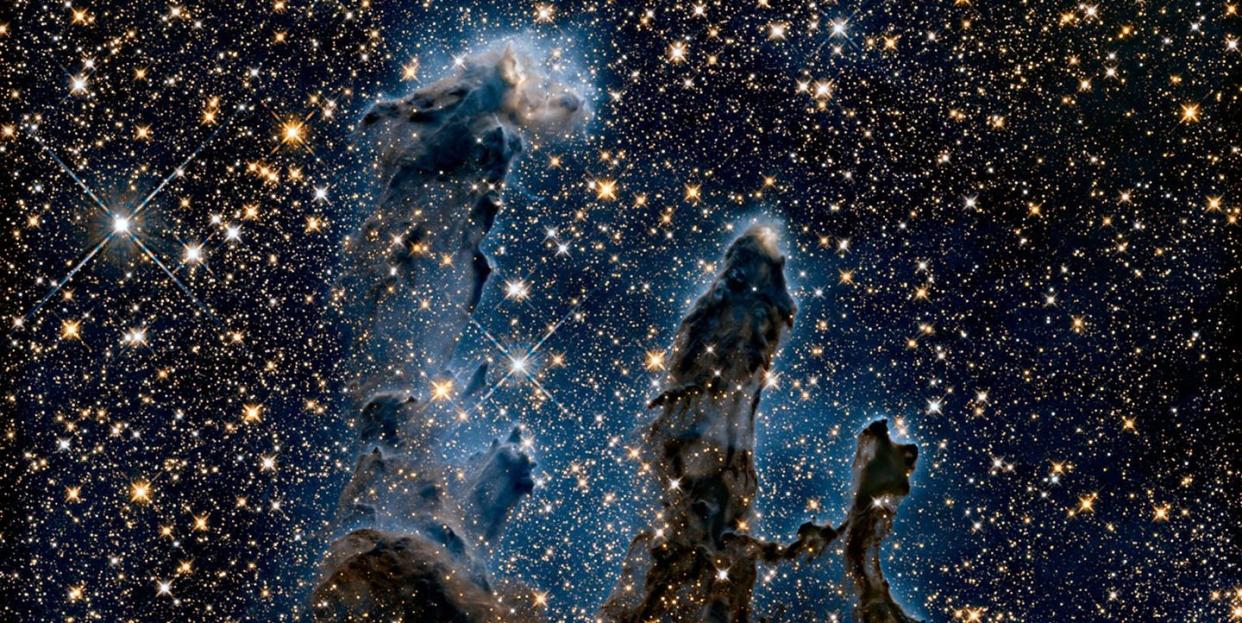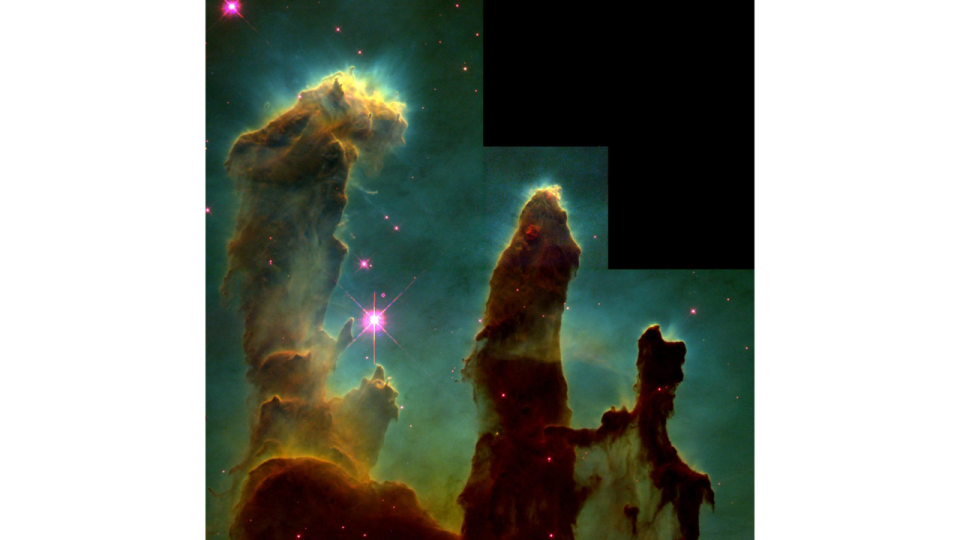New NASA Image Crowns 'Pillars of Creation' as Universe's No. 1 Tourist Attraction

NASA has revealed a new view of the famed "Pillars of Creation," a stellar nursery first documented by the Hubble Space Telescope in 1995.
The Pillars of Creation lie almost 6,000 light years away in the Eagle Nebula.
The team behind the telescope has also released a new feature that highlights a different image for every single day of the year
NASA has released a new image of the famed "Pillars of Creation," and it is a show-stopper.
The Hubble Space Telescope took the first image of the Pillars of Creation, which is located 5,700 light-years away in the Eagle Nebula, in 1995. Thanks to subsequent editions that have been released over the years, it has become one of the most iconic images in astronomy.

The violent tendrils, composed mostly of gas and dust, are home to a celestial nursery. Tiny twinkling stars peek out of the pillars' center—and notably at the top of each pillar—in this newly released infrared image from April 6. While the structure of the pillars have always been illuminated, this time, it's the newly formed stars that are taking center stage. The longer wavelengths of infrared light slide between particles, piercing all but the densest plumes of gas and dust inside the pillars, to reveal a sparkling kaleidoscope of stars within.
In many cases, snapping pictures in infrared light is the only way we're able to view the most distant corners of the universe. The short wavelengths of visible and ultraviolet light are elongated as they travel through space. Once that light from some of the universe's farthest objects reaches the telescope, it's stretched into longer wavelengths of infrared light.
The team behind the telescope has also released a new feature to commemorate Hubble's upcoming 30th anniversary on April 24. Users can select their birthday from a dropdown menu to find out what images Hubble captured on that day. You can find your birthday image here.
Hubble has spotted everything from sparkling galaxy clusters to our solar system's hidden moons. We guarantee you won't be disappointed.
You Might Also Like

 Yahoo News
Yahoo News 
